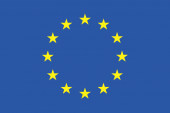Table of Contents
Introduction
Additive manufacturing (AM) is based on the “layer-by-layer” production principle, where the material is added in thin layers, unlike in the traditional production technologies, when the material is removed (subtractive manufacturing) or deformed (forming manufacturing). In order to use the capacity that AM technologies provide in the process of product development, it is necessary to know the design rules for AM, which include primarily new possibilities, but also specific limitations related to different AM processes (procedures).
Wishing to bring AM technologies closer to every interested individual, and to encourage engineers and designers to consider the strategic advantages of AM, the participants of the A_MADAM project designed this open repository in which basic and advanced design rules for AM will be presented in a systematic and simple form (short instructions followed by illustrations).
Since the research on the A_MADAM project was related to Powder Bed Fusion (PBF) technologies, the design rules in the initial version of the repository will apply mainly to those technologies. The repository is open in nature so that, after its formation, it will be able to be continuously supplemented by all interested individuals and groups engaged in additive production.
Concept
The open digital repository of the design rules for the additive manufacturing technologies, named “D4AM Wiki” is a result of the Horizon 2020 project A_MADAM. Its basic aim is to permanently and without any royalties offer the results of the project to wide audience, primary to mechanical designers and students of mechanical engineering.
The main results of the A_MADAM project are the rules for design of products with optimal dynamic properties (fatigue strengths of DMLS/SLM steels MS1, PH1, CX, as well as fracture toughness of DMLS/SLM steels, SLS and MJF polymer materials), and they represent the largest part of the present, initial version of the D4AM. However, the authors made an effort to include also the general rules for design of products of all AM technologies in this repository. Furthermore, the authors also included presentation of general design requirements and guidelines for products of SLS and DMLS/SLM technologies.
The ultimate wish of the authors of D4AM Wiki is to complete it with process-specific rules for other AM technologies. While we remain aware of the complexity of the task, we prepared all the necessary infrastructure to support such a repository. We hope that the specialists in different AM technologies will join us in this effort, as it would contribute to the expansion of the AM technologies and unlocking of their full potentials.
As D4AM Wiki is mainly developed for mechanical engineers and students, the authors tried to be concise and informative, without introductory explanations about the additive manufacturing and design rules that are learned during university courses of mechanical design. For the sake of clarity of definition of terms used in D4AM Wiki, some explanations are provided in the section “Auxiliary and reference information”.
Navigation
Besides the main content of the D4AM Wiki pages, each of its webpages contains also a sidebar, which contains hierarchically organized links to other D4AM Wiki pages. The sidebar is located at the left side of a D4AM Wiki page if the screen is wider than 800 pixels. For screens narrower than 800 pixels the sidebar is hiiden, and it is activated using a drop-down menu “Sidebar” located at the top of the D4AM Wiki page.
For newcomers, at the bottom of each of the pages is a recommendation which D4AM Wiki page should be read next. In this way, the newcomers may read D4AM Wiki also as a book.
All the figures, and in particular mathematical formulae may be enlarged and opened in a separate window of the browser by clicking on them.
Contributions
As explained, the authors are hoping for the contributions of specialists in various AM technologies, materials and design. For these reasons, D4AM Wiki already contains a number of pages that just describe the expected content of the page and an invitation for collaboration. Majority of the pages actually should represent just the starting pages of respective sections. These pages, however, represent just an idea, and the interested authors may suggest other topics or even concepts of the sections.
The contributions are in particular expected about other dynamic behaviour of DMLS/SLM materials (aluminum alloys, titanium alloys, Inconel, etc.) and the design rules for AM technologies other than SLS and DMLS/SLM, which are present in the initial version of D4AM Wiki. A list of the already prepared pages that need contributions may be found in the page “Contributors".
The interested authors should contact the D4AM Wiki Editor by email. Each of the authors will be included in the page "Contributors", with specification of the contribution.
Contact
The Editor and all of the authors may be contacted using the emails given on the page "Contributors".
Acknowledgement
The authors wish to acknowledge the support of European Commission through the project “Advanced design rules for optimal dynamic properties of additive manufacturing products – A_MADAM”, which has received funding from the European Union’s Horizon 2020 research and innovation programme under the Marie Skłodowska-Curie grant agreement No 734455.

